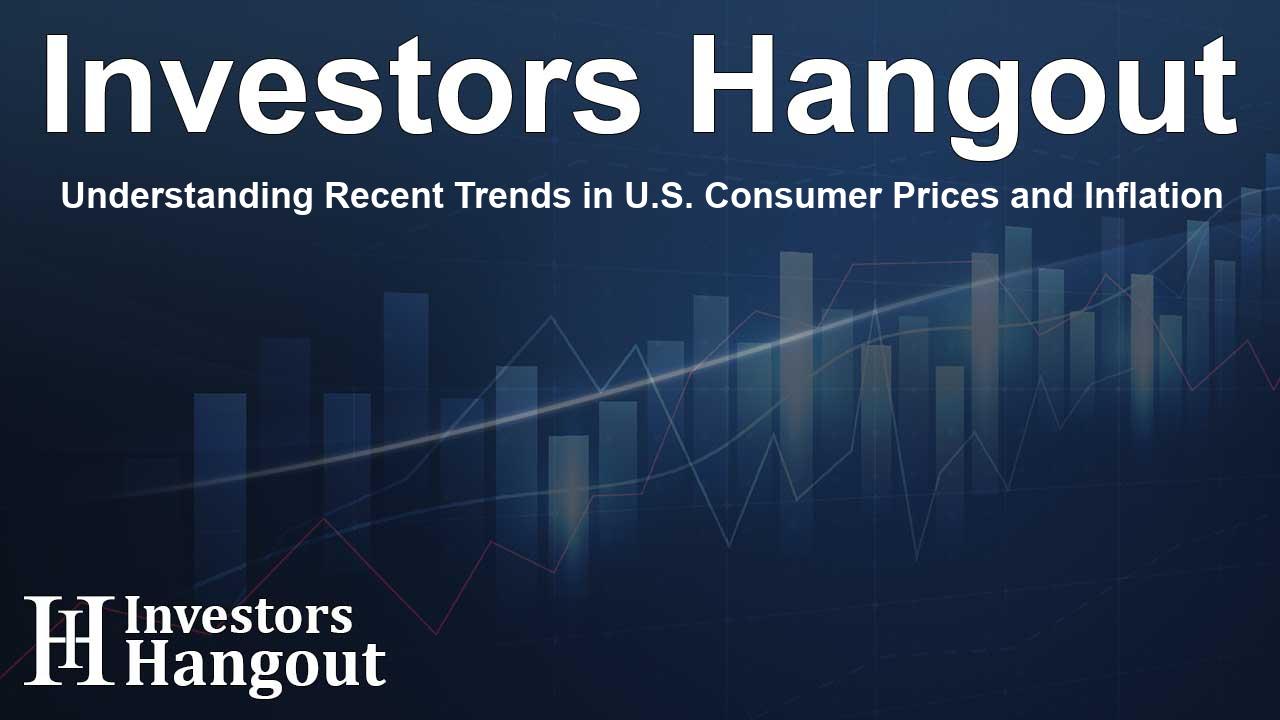Understanding Recent Trends in U.S. Consumer Prices and Inflation

Current Trends in U.S. Consumer Pricing
The latest reports from the U.S. indicate a slight uptick in consumer prices, which presents interesting dynamics in the current economic landscape. Despite the minimal increase in August, inflation proves to be persistent, which may lead to strategic considerations by the Federal Reserve regarding interest rates.
Consumer Price Index Overview
According to data from the Labor Department's Bureau of Labor Statistics, the consumer price index (CPI) increased by 0.2% in August, mirroring the previous month’s growth. Over the last year, the CPI has recorded a significant increase of 2.5%, marking the smallest year-on-year growth since early 2021, following a 2.9% rise in July. This trend suggests a cooling of inflation pressures, which might shift the Fed's focus more towards the labor market as they navigate economic growth.
Inflation Dynamics and Market Reactions
Economists had anticipated a CPI growth of 0.2% alongside a year-on-year increase of 2.6%. Although inflation remains above the Federal Reserve's ideal target of 2%, it has shown a marked slowdown, prompting a reconsideration of rate cut strategies. This could lead to increased attention on labor market conditions, which are seen as pivotal to sustaining the ongoing economic expansion.
Recent Labor Market Insights
Last week's government statistics indicated that nonfarm payrolls rose less than expected in August, yet noticeable improvements were seen as the unemployment rate dipped to 4.2%, down from a near three-year peak of 4.3% in July. This scenario lowers the likelihood of a substantial rate cut while increasing the probability of a more moderate quarter-point reduction.
Consumer Behavior and Borrowing Trends
The labor market is experiencing a slowdown, marked by a significant reduction in hiring, which serves to alleviate potential inflationary pressures. The current financial market portrays approximately a 29% chance of a significant rate cut at the Fed's forthcoming policy meeting, while the odds of a smaller quarter-point reduction are higher, estimated around 71%.
Implications for Monetary Policy
For over a year, the central bank has kept its overnight interest rate stable within the 5.25%-5.50% range, having initiated aggressive hikes totaling 525 basis points throughout 2022 and 2023. The decrease in annual consumer price growth from a peak of 9.1% in June 2022 reflects the impact of increased borrowing costs on consumer demand, which appears to be tempering inflationary pressures.
When excluding volatile components such as food and energy, core CPI registered a rise of 0.3% in August, after a similar 0.2% increase in July. Over the span of 12 months leading to August, core CPI also grew by 3.2%, aligning with prior trends. Some economists suggest the persistent nature of core inflation points against the likelihood of a significant rate cut in the upcoming sessions.
Analyzing Future Prospects
As the economic landscape evolves, it’s crucial to monitor developments regarding consumer prices and inflation. The forthcoming decisions by the Federal Reserve will greatly influence both market reactions and broader economic recovery narratives, providing insights that can guide expectations in the investment community.
Frequently Asked Questions
What is the recent trend in U.S. consumer prices?
U.S. consumer prices show a marginal rise of 0.2% in August and a 2.5% increase year-over-year, reflecting a slowdown in inflation.
How does the current inflation compare to previous periods?
Inflation growth has decreased from a peak of 9.1% in June 2022, showing significant moderation amid rising borrowing costs.
What is the Federal Reserve's stance on interest rates?
The Fed has maintained interest rates in the 5.25%-5.50% range, considering various economic indicators when deciding on future cuts.
What are the implications of the labor market trends observed?
Recent data indicate a cooling labor market with less hiring, which may help alleviate inflationary pressures moving forward.
How might the market respond to further changes in consumer prices?
Market responses will depend on forthcoming Federal Reserve decisions, as shifts in consumer prices directly impact economic forecasts and investment strategies.
About Investors Hangout
Investors Hangout is a leading online stock forum for financial discussion and learning, offering a wide range of free tools and resources. It draws in traders of all levels, who exchange market knowledge, investigate trading tactics, and keep an eye on industry developments in real time. Featuring financial articles, stock message boards, quotes, charts, company profiles, and live news updates. Through cooperative learning and a wealth of informational resources, it helps users from novices creating their first portfolios to experts honing their techniques. Join Investors Hangout today: https://investorshangout.com/
Disclaimer: The content of this article is solely for general informational purposes only; it does not represent legal, financial, or investment advice. Investors Hangout does not offer financial advice; the author is not a licensed financial advisor. Consult a qualified advisor before making any financial or investment decisions based on this article. The author's interpretation of publicly available data shapes the opinions presented here; as a result, they should not be taken as advice to purchase, sell, or hold any securities mentioned or any other investments. The author does not guarantee the accuracy, completeness, or timeliness of any material, providing it "as is." Information and market conditions may change; past performance is not indicative of future outcomes. If any of the material offered here is inaccurate, please contact us for corrections.